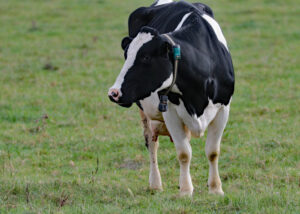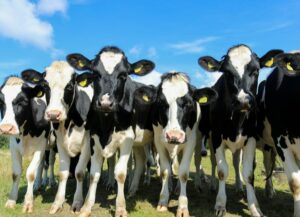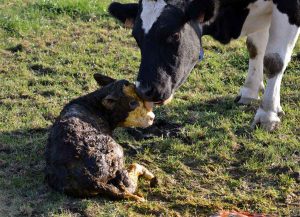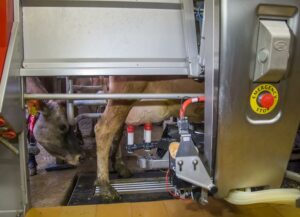Alvaro Garcia
During the transition period dairy cows are at higher risk of developing infectious and metabolic diseases that result from sudden changes in behavior and metabolism. Among these changes the reduction in intake in the weeks close to calving is likely to be the change with the most profound effect as predisposing cause for metabolic problems.
Relationship between dry matter intake, lameness, and the occurrence of metabolic diseases
Inadequate nutrient intake has been associated with common problems such as metritis, subclinical hypocalcemia and subclinical ketosis. To further complicate things a reduction in dry matter (DM) intake during the close-up period may prolong and aggravate the negative energy balance during the transition period through fat mobilization.
This increased metabolism in the adipose tissue and the liver causes a state of inflammation has been linked to higher occurrence of several of these per-parturient problems. Adequate nutrition is also fundamental to maintain hoof integrity and prolong productive life. Lameness continues to be the second highest reason of dairy cow culling in the U.S., right behind mastitis. Furthermore, lameness is considered among the best welfare indicators for dairy cattle.
Subclinical acidosis and its clinical manifestation, laminitis, may result from nutritional or even management errors. Inadequate amounts of dietary effective fiber can result from excessive grain supplementation, the presence of highly fermentable carbohydrates or changes in the fiber/carbohydrate ratios.
One other important aspect to assess the health status of dairy cows is body condition scoring. While subjective, it is still a very useful and practical visual assessment tool of the nutritional status of cattle with high percentages of repeatability attained with practice, both between measurements and scorers.
Body condition score (BCS) can be used routinely both to assess the nutritional status of different cattle feeding groups and to determine the right feed allocation, where it will have the greatest effect on health or on income over feed costs.
If improving BCS to the optimum increases fertility, excessive condition can result in metabolic problems, particularly in close-up cows. Fatty liver for example can occur shortly before and after calving, during the transition period. When faced with a reduction in intake, a cow mobilizes body fat, which increases both the concentration of circulating fatty acids and the fat deposits in the liver.
Recent work has suggested that there is a relationship between dry matter intake, lameness and the occurrence of metabolic diseases. In a recent experiment (Daros et al. 2020) cows were gait-scored weekly using a scale of 1 to 5. Lameness status was classified based on consecutive gait scores as lame (two consecutive gait scores of 3 or 1 score equal or above 4) or sound (two consecutive gait scores less or equal than 2). Lameness status was classified as:
- Lameness at dry-off (sound or lame)
- Lameness group (always sound = sound on all visits, chronically lame = lame on all visits, and other = changed from sound to lame or vice versa)
- Proportion of weeks lame during the dry period
Lameness is associated with reduced feeding time
The results showed that lameness at dry-off was associated with the occurrence of metritis and peri-parturient ailments. Cows that were chronically lame, and those that had an increased proportion of weeks lame during the dry period had higher occurrence of metritis and periparturient problems.
Lameness was also associated with reduced feeding time, which in turn was associated with increased likelihood of sub-clinical ketosis and peri-parturient problems, but not with metritis. Lameness was not associated with changes in body condition. Cows that lost BCS during the dry period, however, were more prone to develop sub-clinical mastitis, metritis, and peri-parturient problems.
Changes in body condition were highly associated with body condition score at dry-off; BCS loss was associated with BCS at dry-off with cows that were fat at dry-off losing body condition, and thin cows gaining body condition during the dry period.
Reducing lameness during the dry period may improve health of transition dairy cows
These results suggest that reducing lameness during the dry period and avoiding over-conditioning at dry-off may improve health of cows in transition. It is possible that lameness could be associated with peri-parturient diseases because of reduced feeding time throughout the dry period.
In this experiment lame cows spent less time feeding than sound cows, and lower feeding time was in turn associated with higher odds of transition diseases.
Reference
Ruan R. Daros, Hanna K. Eriksson, Daniel M. Weary, and Marina A. G. von Keyserlingk. The relationship between transition period diseases and lameness, feeding time, and body condition during the dry period. J. Dairy Sci. (2020) 103:649–665.
© 2020 Dairy Knowledge Center. All Rights Reserved.









